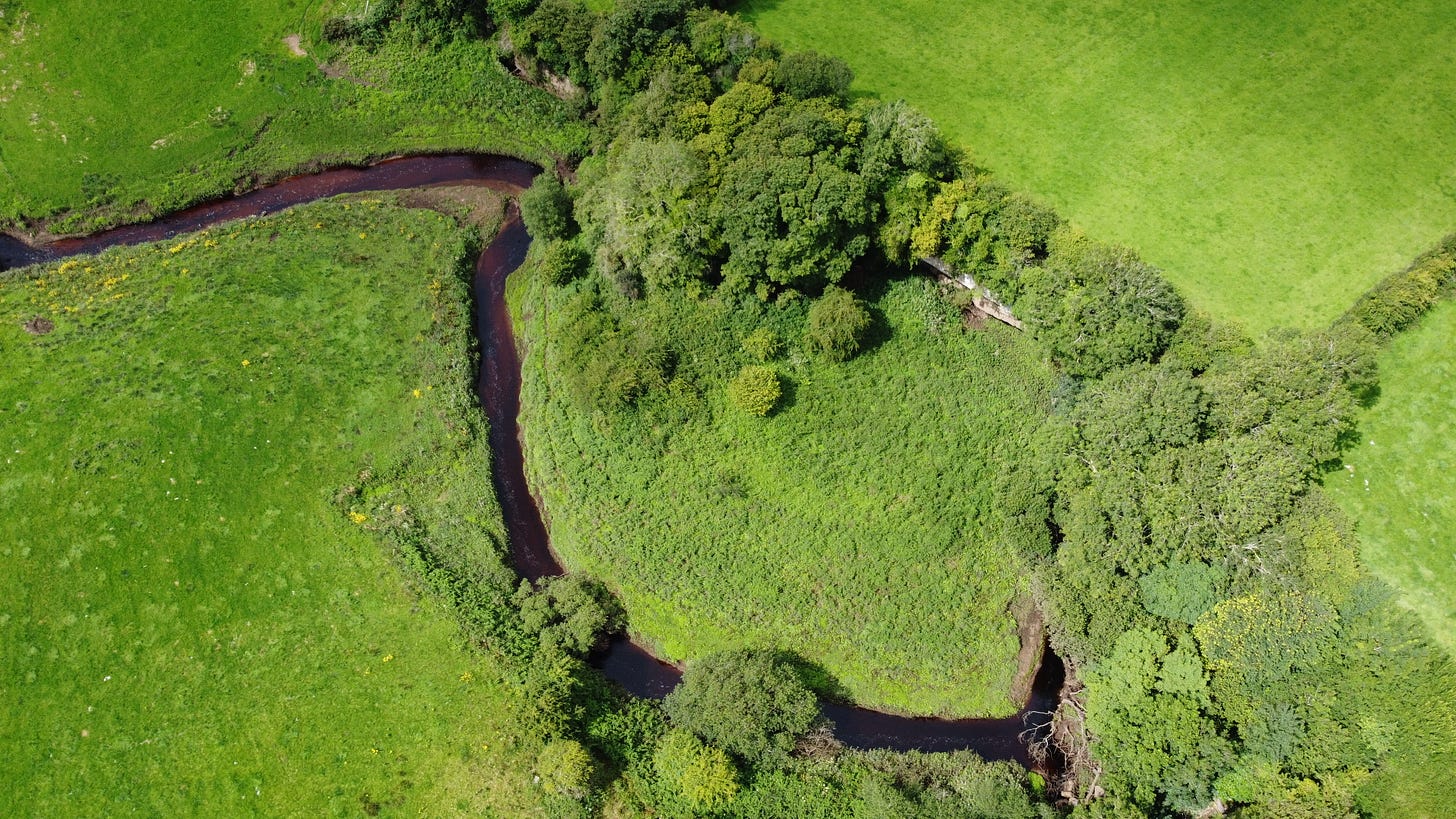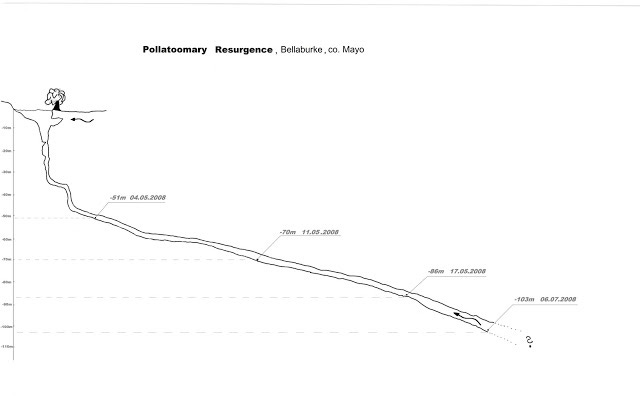Under the Aille cliffs, the depths beckon
The trail goes past the deepest wells in these islands
A few kilometres on from Mayo Abbey, the church at Ballintubber marks the start of the Tóchar Phádraig, the latest revival of the pilgrim route. From here, much of the route can be walked off road. From Ballintubber to Aghagower, the route roughly follows the Aille river. The Aille river rises in the Partry mountains and flows first northwest, loops north of Lough Mask, and then turns to run eastwards. About three kilometres east of Aghagower along the ancient trail, the river pools under a cliff and then vanishes underground. Between the Aille cliffs and Bellaburke, where the river resurges at Pollatoomary, the trail follows the path of the underground river. It was long believed that the river sank to about thirty metres below the surface, until recent discoveries re-wrote the narrative.
The pilgrim trail emerges from fields back onto the road into Killawalla, where it follows the R330 north from the village before turning left off the main road and back onto the track across the countryside. To the left, the trail seems to drop off precipitously, and below, the river Aille can been gathering into a pool at the bottom of the cliff face, sometimes extending out into a lake after heavy rains.

Flowing east, the River Aille pools and disappears at the Aille Cliffs.
These caves below the Aille cliffs and at Pollantoomary were re-discovered by visitors from overseas, starting with potholers from the UK who first explored the area in the late 1960s and early 70s, reporting the presence of blind fish in the caves. In 1978, the Welsh cave diver Martyn Farr swam down into the caves to a depth of 30 metres. Farr, a legend in cave diving circles, trained a student called Artur Kozłowski, a Pole who worked in Ireland as a quantity surveyor. Kozłowski’s day job brought him into contact with caves. “Exploration is an obsession,” he wrote, and “once you taste it nothing else will taste remotely as good.”
When Galway County Council was planning the M18 motorway past Gort, it had concerns about the cave systems below ground. How extensive were they? Would they hold the weight of the road? They turned to Artur Kozłowski to explore the caves and map out any problems. Kozłowski, who lived in Dublin, had become one of the best cave divers in Ireland, documenting his explorations on his blog Hell and High Water. “Since his first visit in Ireland in 1978 Martyn made many astonishing discoveries in Ireland, both in dry caving and cave diving,” he wrote. “I had a privilege, over last four years to continue many of his projects only to confirm what he had already suspected: that Ireland indeed has one of the most unique system of underwater caves in Europe.” From the start of this trail near Rathcroghan, a vast karst aquifer stretches from the river Shannon across the plains of Roscommon and Mayo to Clew Bay. It’s fair to say that this is still a new discovery, and Kozłowski was one of those pushing the boundaries.

From Artur Kozłowski’s Hell and High Water blog, the resurgence at Pollnatoomary is where the divers descended to over 100 metres.
In 2008, Kozłowski pushed further than his mentor had managed, diving the Aille caves to 103 metres underground. At the time, Kozłowski’s feat astonished the diving world: it set the record for the deepest known dive in Ireland and the UK. And that wasn’t the end of the story. Some years later Michal Marek, a colleague of Kozłowski, dived the cave again to a depth of 113 metres.
It’s a dangerous business though. Kozłowski was convinced, probably correctly, that the Kiltartan caves connected to the caves underneath the Burren, which would make them the largest cave systems in the whole of Europe - and make the find Kozłowski’s. He sadly died while diving in the Kiltartan caves in 2011. Michal Marek died in 2019 while diving in Donegal. Kozłowski said that he knew he was exploring something not yet mapped. In that sense, they lived in the spirit of the land.




Another compelling post. this time with a sad ending in the loss of those brave divers. Looking forward to the book.